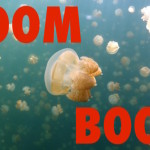When we picture monsters from the deep, most envision colossal sea beasts ready to drag the unsuspecting sailor to abyss. In actuality the sea beasts are at the other end of the size spectrum. Those viscous, nasty bacteria that line your digestive tract that could send you to your grave originated from deep-sea bacteria. A Japanese group report in PNAS that the two groups of bacteria share several genes allowing both to survive inhospitable habitats allowing them to flourish from temperatures between 39-158 degrees Fahrenheit.
2 Replies to “Sea Monsters Lurk in Your Gut”
Comments are closed.






Craig, did you seriously think I could let a broad and stereotypically libelous statement like “vicious, nasty bacteria” go by without comment? Scandelous! I could not find the paper you describe to find out what bacteria the Japanese group was looking at. However, the bacteria lining your (and everyone else’s) digestive track are your friends. They help you out by synthesizing vitamins and by breaking down some polysaccharides we have no enzymes to digest ourselves. For that matter, since there are an order of magnitude more bacteria in your colon than you have cells in your body, you’d be well served remembering who is in the minority in this situation…
It’s online-before-in-print, and it’s open access, and the abstract (with links) is at
http://www.pnas.org/cgi/content/abstract/0700687104v1
Deep-sea vent [epsilon]-proteobacterial genomes provide insights into emergence of pathogens.
S. Nakagawa and others.
Proc. Natl. Acad. Sci. USA, 10.1073/pnas.0700687104
Hooray! for most of my gut bacteria. (Thanks, guys!)
But the authors found that some deep-sea proteobacteria are closely related to Helicobacter and Campylobacter, which are, to me and my digestive tract, decidedly vicious and nasty (although I don’t know about their viscosity). The deep-sea bugs’ genomes indicate they have a lot of metabolic tricks (such as multiple respiration pathways or metal-detox capabilities, and even virulence determinants) that are very close to those that the Helicos and Campys are using to be so nasty to us — colonizing and evading host defenses and such.
Pretty cool.
And I think Craig was assuming we all know that we’d be dead without our bacterial friends in our guts.